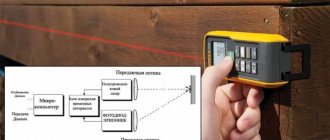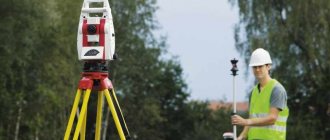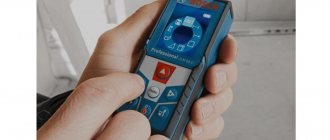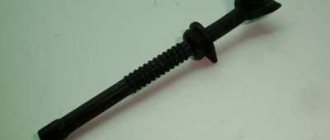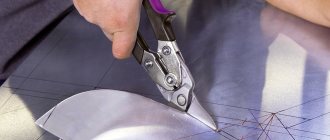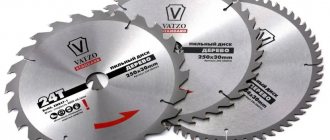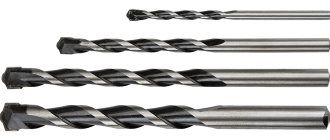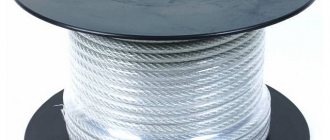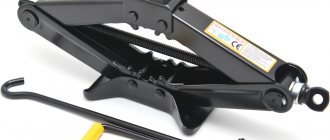Operating principle and comparison with ultrasonic tape measures
The main task of a laser rangefinder is to non-contactly measure distances to distant objects; By design, it is an electronic or electro-optical device. The internal structure tells you how the laser rangefinder works; The operating principle is based on the use of the phase shift effect.
Behind the physical term lies an essentially simple technology. The device has an emitter and a photodetector; When the performer presses the button, the following chain of actions occurs:
- The emitter sends a beam to the selected object.
- The beam is reflected from the surface and returns, hitting the photodetector.
- The signal returns with a delay, which is recorded by the instrument.
- The microprocessor compares the phases of the sent and returned signals. Phase is a characteristic of an electromagnetic pulse associated with the frequency of radiation; for the forward and reverse signals it shifts.
- The distance traveled by the beam is determined by the phase shift, and the result is displayed on the display.
Operating principle of laser rangefinders Source mebpilot.ru
This is how a rangefinder works, based on measuring the pulse shift of a laser beam. It is important to understand that, in addition to laser ones, there are tape measures that measure distances using ultrasound. Ultrasonic devices also create a light mark on an object using a laser LED, but this is the only similarity.
The ultrasound signal diverges in a cone, which introduces more errors into the measurements and reduces their accuracy. For example, if you measure the distance to a beam, the reflected signal will come not only from it, but also from the adjacent wall. The reflected signal from the wall will be strong, and this will distort the result. The fact that the speed and attenuation of sound waves is influenced by weather conditions also introduces its own errors.
A few years ago, instruments powered by ultrasound were widespread due to the fact that they cost significantly less than their laser counterparts; now the difference has practically disappeared. Due to low accuracy, they never became popular, although they have their advantages. For example, they are immune to bright light and are able to determine the distance to transparent planes.
Laser beam provides high measurement accuracy Source amazon.com
Where are the sensors used?
Laser distance sensors are primarily used in the construction industry to measure the distance between objects, but they have many applications. For example, distance sensors can help in arranging a smart home. By installing and configuring the sensor in a certain way, you can automate turning on and off the lights in the room or automatically open or close doors, and so on.
Also, a similar sensor is installed in every modern smartphone; it turns off the screen as soon as the smartphone is brought close to the ear during a conversation. Distance sensors are often installed in the hood and bumper of a car to make parking easier and provide real-time data about obstacles in the vehicle's path.
These distance sensors can be purchased separately, but without a programmable microcontroller they are almost useless. Therefore, it makes sense to buy them separately only for solving a narrow range of problems. To connect sensors, an Arduino microcontroller is usually used, which must be manually configured and flashed to work with a specific type of sensor.
For those who do not want to delve into the basics of programming the Arduino platform and radio equipment, it is recommended to buy a ready-made option in the form of a construction rangefinder.
Varieties and their applications
The question of how to choose a laser rangefinder is of interest to people who are faced with the variety of offers for the first time. You can cut off a significant part of them if you formulate the boundaries of use for yourself. According to this principle, laser roulettes are divided into two types:
- Household. The models are relatively cheap, but this does not affect the accuracy. They will help during renovations or construction. Additionally, they are equipped with a calculator for calculating the area, and a small memory for saving measurement results.
- Professional. Such instruments have an expanded range of functions, the ability to measure long distances (50-100 m or more), expanded memory, a high degree of protection from dust and moisture, and work with Bluetooth for data transfer. Many models are threaded and can be mounted on a tripod, increasing measurement accuracy.
Rangefinders have become indispensable assistants in various fields of activity; they are used in the following areas:
- Excavation work during construction and laying communications.
- Construction and finishing work, including marking of lumber.
Many models will help you calculate the amount of materials Source pirometr.com.ua
- Geodetic work, land surveying.
- Installation work during the construction of structures and communications.
- Design of premises and landscape, development of cabinet furniture.
- Applied tasks: hunting, navigation, control (inspection work), military affairs.
To solve design or land management problems, you need tools with a different set of parameters, and it is important to understand which of them are basic and which are secondary.
See also: Catalog of companies that specialize in the reconstruction and rebuilding of houses
Bosch GLM 40 Professional 0.601.072.900
This is a good solution for professionals. The Bosch GLM 40 Professional laser rangefinder is very popular among representatives of the construction professions.
The device helps to measure length, calculate area, and calculate volume. It has a reliable shock-resistant case. The measurements taken are displayed on a 3-line backlit display. The model remembers the last 10 calculations.
What you need to know about measuring range
The range of rangefinders varies from 10-20 to 60-200 m (in open areas). It may seem that the greater the “range” of the device, the better, but everything is not so simple.
The ability to take measurements over long distances is a plus, but you need to understand that as the measurement distance increases, the price of the device also increases. Therefore, the measurement range shows where it is more convenient to use one or another rangefinder, for example:
- For measurements in apartments and private houses, a 20 m laser tape measure is sufficient, capable of calculating the perimeter of the room and estimating the length of the wiring.
- If measurements are expected in large rooms or on a site, a device with a range of 40-50 m is suitable.
There are plenty of roulette possibilities in everyday life Source positronica.ru
- For working outdoors and at large facilities (warehouse, hangar), a 100 m device is useful.
Ratings of laser rangefinders regularly appear on specialized websites, but they do not always focus on the features of using long-range devices. The fact is that on the street the human eye ceases to distinguish the light guidance mark already from 15-20 m (and in bright sunshine from 10 m).
Therefore, if you plan to take measurements at 40 m or more, you cannot do without a tripod and a digital viewfinder with the ZOOM function. This will not only simplify measurements, but also increase their accuracy.
By the way, if measuring short distances is important for your work, then you need to pay attention not only to the maximum possible, but also to the minimum distance (it is also limited, for example, at least 50 cm). The signal transmitter and receiver in the rangefinder are separated by some distance; at a short distance the reflected beam will not be able to reach the receiver.
Using a tripod improves accuracy Source ebayimg.com
ADA Cosmo MINI A00410 - laser tape measure
This is a compact device that has a minimum number of functions, but they are quite sufficient for measurements and calculations.
It is an excellent alternative to a regular tape measure and is suitable for finishing and carpentry work, and when installing windows. This is a compact and lightweight device that can be used both on a construction site and at home.
What you need to know about measurement error
The accuracy shows how accurate the instrument's readings are. Compared to ultrasonic models (with an error of 3-6 mm), laser analogues demonstrate better performance. It is important to know the following facts about measurement error:
- Accuracy (error) is indicated in two ways: +/- 0.5% or +/- 1 mm.
- The average error of household devices does not exceed 5-6 mm.
- Professional and semi-professional rangefinders have an error of 1-2 mm.
- There are highly specialized models for which high accuracy is not needed. For example, the error of hunting models can reach 1 m.
There is a concept of a reference point. Most models determine the distance starting from the rear end of the rangefinder. This system is convenient if you work indoors and measure the distance, for example, from wall to wall.
Some tools have multiple reference points, which expands their application possibilities. For example, if the reference point is the front end, this simplifies measurements on the external surfaces of the structure. When working with a tripod, the reference point becomes the tripod attachment point.
Choosing a reference point simplifies work in hard-to-reach places Source ivd.ru
Links
| Types of cameras | Single-lens reflex • Double-lens reflex • Rangefinder • Scale • Simplest • Large format • Medium format • Small format • Semi-format • Box camera • Travel • Compact • Panoramic • Folding • Stereoscopic • Digital • Digital medium format • Digital SLR • Pseudo-mirror • Digital mirrorless • Aerial camera • Photo machine gun |
| Terms | White balance • Bokeh • Flash guide number • Vignetting • Main focus • Depth of field • Aperture • Distortion • Cropping • Crop factor • Illumination • Relative aperture • Scatter spot • Working distance • Aperture • Flash synchronization • Focal plane • Focal length • Photo printing • Photographic latitude • Exposure • Equivalent focal length |
| Manufacturers | Agfa • Canon • Casio • Eastman Kodak • Fujifilm • Hama • Konica • Konica Minolta • Leica • Minolta • Nikon • Olympus • Panasonic Lumix • Pentax • Polaroid • Ricoh • Samsung • Sigma Corporation • Sony • Tamron • Arsenal • BelOMO • KMZ • LOMO • FED |
| Technique | Autofocus • Adapter • Bayonet • Battery Grip • Shoe • Hood • Winder • Head • Viewfinder • Rangefinder • Zoom Lens • Sensor • Mecha • Mira • Monopod • Motor Drive • Eyecup • Attachment Lens • Lens • Hunting Camera • Adapter • Aperture Repeater • Light filter • Teleconverter • Extension rings • Prime lens • Bayer filter • Flash • Photographic shutter • Photo recorder • Photogun • Digital back • Wide-angle converter • Tripod • Light meter |
| Portal • List of the most expensive photographs | |
Criterias of choice
It doesn’t matter whether you are looking for a model from a well-known manufacturer, or trying to purchase a budget analogue. When choosing, you will still be guided by the purpose for which the rangefinder is purchased, as well as the regularity of use. There is no need to purchase an expensive model if you do not plan to use it regularly.
Those who are planning to choose a laser tape measure should pay attention to the class of the laser, which directly affects the measurement distance. There are three classes:
- Class 2. They are found in rangefinders operating at distances up to 70 m. They are considered safe; a beam accidentally entering the eyes will not harm the retina.
- Class 2M. The beam power is higher, it works at medium distances and can damage the retina, but it makes it easier to take measurements outdoors, especially in cloudy weather.
- Class 3R. They work with rangefinders operating at 300-500 m and require the use of safety glasses.
Laser power affects the measurement range Source mosoblzhilservice.rf
Device functionality
The functionality of budget models is properly limited to range measurement only. But mid-price range devices already include many useful features, including:
- Definitions of perimeter and area.
- Calculation of the volume of measured objects.
- Built-in level.
- Data transfer.
And this is not the entire list of capabilities of high-quality rangefinders. As the price of a device increases, so does its functionality. A professional rangefinder is the most important tool for a builder, without which it is impossible to complete a project efficiently.
When choosing a rangefinder, you need to rely on the fact that it has a built-in capability:
- Calculate area and volume. These indicators are calculated by measuring several faces. The function is useful during finishing work; it makes it easier to calculate the amount of building materials.
- Level - used for a wide variety of purposes. The device can be equipped with a simple level, designed as a spirit level, which is located on the body, or as a functional program that displays the degree of inclination on the display.
- Same type brackets - allow you to take diagonal measurements from corners where it is impossible to tightly fix the device. Some distance sensors are equipped with retractable pins that are located inside the housing.
- Data saving - this function greatly facilitates work where it is necessary to carry out many parallel measurements and eliminates the need to write down data on the area and volume of objects on paper. The ability to view the results of past measurements at any time can also be useful when choosing building materials, when in the store you need to clearly navigate the size of the room.
- Transfer of accumulated data. Data transfer to another device usually occurs using a USB cable, but expensive models have built-in Bluetooth. All measurements can be transmitted as a text file or image. Also, the obtained data can be conveniently converted into an accurate drawing of the room using a special program.
- Continuous change - this function turns the device into a laser tape measure that shows the distance to an obstacle in real time. This function will help you measure out part of the required length and check the unevenness of the surfaces on which the rangefinder is installed.
- Visor - has the form of a small optical sight, which is used to accurately point the measuring beam at the desired object located in the distance. In professional models, the viewfinder looks like a camera and displays an image with a crosshair or dot on the device screen for easy aiming.
- Height measurement - this function allows you to get data on the height of a ceiling, house or other tall object. The measurement occurs in this way - you need to measure the distance from the device to the base of the object and to the end point. Next, the received data is processed by the device and the measurement results are displayed on the display.
This set of functions is relevant for builders. If a laser rangefinder is purchased for household purposes or minor repairs, you can limit yourself to an inexpensive model without many functions.
Briefly about the main thing
Laser rangefinders are useful in solving a variety of application problems. The choice of a suitable model is made taking into account the scope and frequency of its use. This will determine which tool with what characteristics will be the best option.
The main characteristics of the device are range and measurement error. They are determined by the laser power; According to this parameter, laser devices are divided into three classes. Additional features may be useful for various purposes: number of reference points, ability to save results, tilt sensor, display backlight. The capabilities of standard household tools are sufficient for use indoors and on small plots of land.
Ratings 0
Rangefinder verification
According to the regulatory framework, the frequency of verification of laser rangefinders is once a year.
In this case, the parameter is sometimes set for a specific model by the manufacturer itself.
Verification is also performed in the following cases:
- If the device is new and will be used in the future for its intended purpose.
- When specialized work of various types is expected to be carried out.
- If the transportation or storage conditions were incorrect, which led to suspicion of defects.
- As prescribed by government agencies.
- At the owner's own request.
After completing this procedure, a corresponding document for the device is issued, indicating all the necessary parameters.
How and where to do the verification?
The rangefinder is checked in the following order:
- External inspection to find noticeable defects.
- Operational testing – the operating efficiency of individual components is assessed. High precision control devices are used.
- Primary check - the working wavelength of the laser, its power, and beam diameter are determined.
Verifications are carried out by specialists from metrology companies that have the appropriate certificate.
